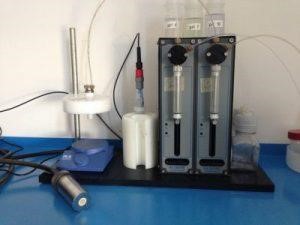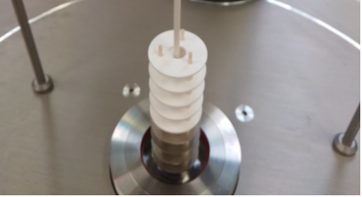This technology allows the measurement of the zeta potential of particles which are dispersed in liquid media that is strictly related with the colloidal stability of the suspensions.
The measurement of the zeta potential of particles dispersed in concentrated water-based dispersions (0.1-50 vol% depending on the sample) is performed by an electroacoustic technique (CVI). It is based on the application of a sound wave and to the detection of the corresponding electrical current generated between two electrodes immersed in the sample. From these raw data the dynamic mobility of the particles can be obtained that in turn can be converted in zeta potential on the basis of theoretical models.
Main characterizations
- Zeta potential dependence on pH (isoelectric point determination).
- Zeta potential dependence on the concentration of an additive (determination of the optimal concentration).
Instrument available:
- Dispersion Technology DT-310
Additional information on tests available:
https://www.istec.cnr.it/en/research/technological-laboratories/colloidal-property-laboratory-of-interface/
i
@
provided at NFFA-Europe laboratories by:
i
@
provided at NFFA-Europe laboratories by:
Also consider
Structural & Morphology Characterization
SEM Scanning Electron Microscopy
In SEM a beam is scanned over a sample surface while a signal from secondary or back-scattered electrons is recorded. SEM is used to image an area of the sample with nanometric resolution, and also to measure its composition, crystallographic phase distribution and local texture.
Structural & Morphology Characterization
XRD X-Ray Diffraction
XRD provides non-destructive information on the structural order of a material. At large scattering angles XRD permits to identify different crystal phases and to quantify lattice distances and crystalline volume fractions. At low angles of incidence the surface roughness of a single crystal and the thickness of a deposition layer can be obtained.
Nano to Micro/Macro
TGA Thermogravimetric Analysis (TGA)
The thermal analyses are the set of techniques in which a physical property of a substance is measured as a function of temperature (or time) while the sample is subjected to a controlled temperature program (heating, cooling, isotherm).






